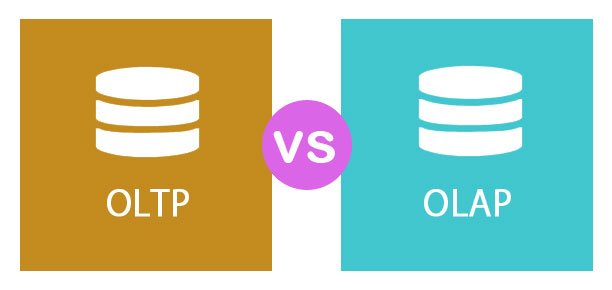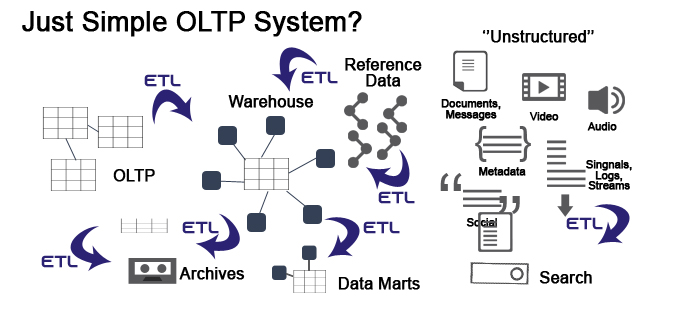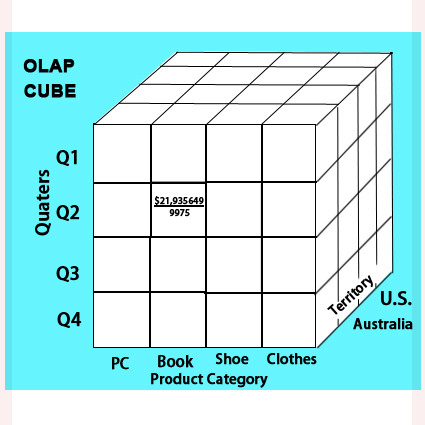Updated March 31, 2023
Difference Between OLTP vs OLAP
OLTP is a data processing system for the transactional of data. OLAP is also a data processing system for analyzing data to derive insights. OLTP system is helpful for front-line workers or customer service such as cashiers, help desk, online transactions, reserving online, etc. In contrast to this, OLAP supports decision taking applications and is used by business analysts, data scientists, etc. This online processing system is behind the decisions of businesses, and the transaction system helps us every day.
Online Transactional Processing (OLTP)
OLTP is the process of managing and updating the transactions in the databases. OLTP is usually simple and involves effortless querying in the system. For Big/Medium companies to carry out their administrative/business or sales tasks, it is compulsory to have OLTP systems that should take care of the vast number of daily transactions.
Example of OLTP
An example of an OLTP system is a mega grocery store. For e.g., a person buys 15 products and goes to the counter for billing. Now it’s the OLTP system that will be taking care of transactions that are to happen. Let’s count the number of transactions that might occur.
- The first should be the invoice of the bill that generates and stored in DB.
- The second transaction might be product information insertion in the database against the invoice.
- If the customer has any loyalty cards and uses them, a transaction will happen that will deduct the points from his cards and update the new point for his card.
- The other transactions reduce the total count of products by the number of products the customer buys. For e.g., if the megastore has 3489 curd packets and the customer buys 2 of them, a transaction will happen, which will update the total count to 3489 minus 2, i.e., 3487. Similar transactions will happen for other products as well.
So a couple of examples of the OLTP system are:
- ATMs
- Banks
- Malls
- Booking trains and flights online
- E-commerce
Online Analytical Processing (OLAP)
OLAP is the process of retrieving the required data from the database to use it for Analytical actions. OLAP is a complex system with larger volumes of data and hence requires complicated querying. There are very low transactions that are happening at the OLAP level, and they help the business to make better decisions. OLAP systems allow users to analyze data from more than one database. The reason why ETL imposes data from the different databases is in another format. So before storing them in Data Warehouse, ETL is imposed.
Example of OLAP
An E-commerce company would like to compare the figure for its sales for the month of February and March. Also, to see the sales region-wise, then state-wise, time-wise, and finally country-wise.
To achieve this, a system should be in place to insert the data from different OLTP Databases into the Data warehouse and apply the ETL process. Then OLAP developers will fetch data from the OLAP system and create different types of reports and charts based on the business requirement. Examples of OLAP software are – SAP BI/BO/BOBJ, Power BI from Microsoft, Tableau, Spotify, SAS, Python and R, Excel, Apache Spark, Splunk, and Google Analytics.
Head To Head Comparison Between OLTP and OLAP (Infographics)
Below is the top 12 comparison between OLTP vs OLAP:-
Advantages And Disadvantages of OLTP
Advantages of OLTP
- It dramatically simplifies the transactional events of an organization by providing a robust mechanism to process and store transactional data.
- OLTP systems are high-speed and instant.
- They increase the customer count of an organization by making individual processes simplified.
Disadvantages of OLTP
- Almost no insight into data analytics.
- In case of server failure, the transaction might result in delays and, in some cases, might lead to data loss.
- More prone to attack by hackers.
Advantages and Disadvantages of OLAP
Advantages of OLAP
- A single platform for addressing analytics for data coming from different sources.
- Data from different sources are stored in a centralized location, thereby enabling easier access to large amounts of information.
- Accurate and fast computations.
- High-level security.
Disadvantages of OLAP
- The cost of implementing OLAP is high due to the licensed and high-priced software.
- The full end-to-end monitoring, implementation, and upgrades of OLAP systems are dependent on IT experts specialized in this area.
- Since it might be the possibility that there is more than one database involved for data insertion from OLTP to OLAP systems, remaining in line with all the DB teams might pose a challenge.
Comparison table between OLTP vs OLAP System
| Basis of Comparison | OLTP (Online Transactional Processing Systems) | OLAP (Online Transactional Analytics Systems) |
| Process | It is to manage transactions that are happening every day and update the database. | It is to retrieve the data from OLTP systems and carry analysis over the data. |
| Data Source | Here OLTP systems are the source of the data. | Data to OLAP comes from different OLTP databases. |
| Need | To run the business seamlessly. | To analyze and predict business, to find out the lacking and booming areas in the business and accordingly act. |
| Insert and Update | Fast and short insertion and updating of user data. | Typically long-running batch jobs take care of data insertion. |
| Queries | Small and simple queries that take care of Data Processing | Relatively larger and more complex queries |
| Method | It makes use of a traditional DBMS system | It makes use of the Data Warehouse |
| Response Time | The response time of OLTP systems is in milliseconds. | Response times of OLAP systems are more significant and might vary from seconds to minutes to even hours. |
| Database Table Normalization | OLTP tables are highly normalized | OLAP systems that are typically de-normalized |
| Access | Read and write both accesses are permitted | Mostly read access is approved, and rarely writing is allowed. |
| Integrity | OLTP systems are to maintain data integrity. | Since OLAP systems are not frequently modified, data integrity is not compulsory. |
| Backup and Recovery | A complete and back for all the databases is required since data availability is very critical in OLTP systems. | OLAP systems are backed on a timely basis and not regularly. |
| Target audience | It is mainly for market insight. | It is for customer insight. |
Final Thoughts
The terms OLAP and OLTP look similar but differ in systems. OLAP is a computing method that uses complex queries for data analysis, and it is informational. OLTP is a data processing method that stores and processes data in transactions, and it is operational.
Frequently Asked Questions(FAQs)
Q1 What are the limitations of OLAP?
Answer: All departments working with OLAP systems must be cooperative. Due to time-consuming and complex procedures, a user must be a professional to handle the system. It is costlier to implement the system.
Q2 What are the limitations of OLTP?
Answer: OLTP enables various users to view and edit the data simultaneously. This results in certain unusual situations. In case of any failure in the OLTP system, the transactions get severely affected.
Q3 What is ETL?
Answer: ETL, or Extract, Transform, and Load, is an integration process in business intelligence. It combines the data from several data sources into one single consistent data. It transforms the OLTP into OLAP.
Recommended Articles
This EDUCBA guide to the top difference between OLTP vs OLAP discusses the key differences with infographics and a comparison table. EDUCBA also recommended having a look at the following articles to learn more –




